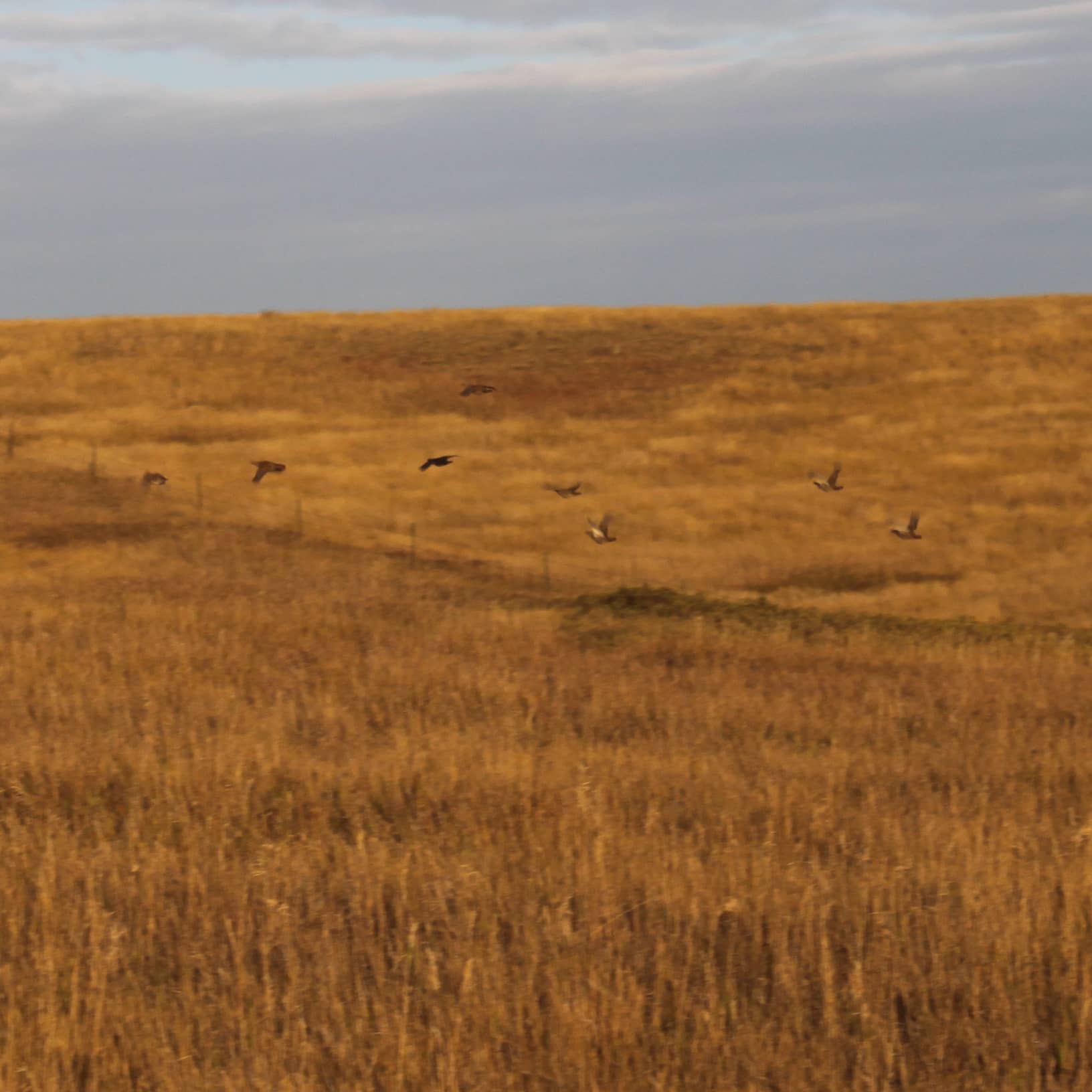
By Nick Simonson
Few events in the outdoors are more startling than a flushing covey of Hungarian partridge or sharptailed grouse.
With the opener within reach and early season birds prone to group rises, finding yourself in a situation where a flock of birds rushes skyward can leave even the best wingshooter surprised and send errant shots into what seems like a ball of easy targets where at least one should drop.
Avoiding the dreaded flock shot and focusing in on one or two birds can help convert those startling situations into something special on opening day and deep into the upland season. What follows are some tips to seize the moment and set up a great opportunity, no matter how many birds get up at one time.
Prepare for the Flock
Like waiting to set the hook on a topwater lure inhaled by a bass, waiting to shoot at a fleeing group of upland birds takes some effort to overcome the adrenaline the situation generates. Give your body and mind a second to settle down as you mount your firearm and prepare to shoot.
Be knowledgeable about the species of birds and where they’re likely to be found, so the flush seems less shocking. With sharptailed grouse, they’re often in light grass, or during times of tougher weather near cover like buffaloberry bushes.
Ready yourself for covies to take flight together, and always play the wind into likely holding spaces, carefully monitoring a dog that appears hot on a distant covey’s scent carried by the breezes. In the morning, sunny hillsides will hold grouse drying off and warming up from the evening. Partridge are edge birds, much like pheasants, and will relate to the ends of reserve lands that abut crop fields. By understanding where flocking upland birds like to be, you’ll be more prepared when the group takes flight.
Pick One
When a group of birds flush, try to select just one to shoot at. Separate it in your head from the others by its location or movement, or perhaps you see more of its underbelly, or maybe it is more fully colored than the younger birds in the covey. Pick the top bird, the bottom bird, the closest one or perhaps one that’s peeling off in another direction and shoot. Know that at 1200 feet per second, your shot will catch up with the bird you selected, and likely after you drop it, another one you can single out from the group with a follow-up salvo. Singling out birds and seeing the proverbial tree through the forest will help add weight to your game bag.
Repeat the Process
Practice makes perfect when it comes to avoiding the gut-instinct flock shot that seems to sail between every target in a group. Experience in the field pays when hunting sharpies and huns and the more the flock shot is encountered, the easier it is to overcome the rush of excitement that rises with the birds. Time on a shooting range will help as well, as skeet, sporting clays, five-stand and flurry-style shots help hone both eyesight and instinct on multiple targets that go zipping by. The more time put in behind the thrower and behind a good bird dog, the more the experience of adjusting to multiple targets will be like second nature.
This fall avoid the flock shot and add a few more birds to the bag.
Focus on where birds are likely to be found, knowing their habits and their habitat. Find a way to step back from the shock of the flock and pick the first bird; and when it goes down, maybe a second.
Keep finding places to hone that mental toughness, be it in the field or at the range, and be more prepared with each season to pass on the flock and find that one perfect shot.
